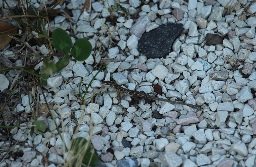Italian Wall Lizard (Podarcis siculus)
Description: The snout–vent length of P. siculus is 5.9–9.8 inches on average. P. siculus is characterized by a green or brown back with a white or green belly. There is variation in length and color diversity due to the many subspecies and populations of P. siculus. For example, some subspecies are melanic, meaning that parts of the back and belly have hints of blue. Such coloration is found on island populations of P. siculus rather than continental populations.
Habitat: P. siculus is a habitat generalist and thrives in many natural and human-modified environments. Habitats of P. siculus include forests, grasslands, shrublands, rocky areas, and farmland. It is able to live in such open habitats due to biological characteristics, such as high thermophily, which is the ability to thrive in high temperatures.
Range: P. siculus is native to Italy and is one of the most common lizards found in the nation. Its range also includes Bosnia and Herzegovina, Croatia, France, Montenegro, Slovenia, and Switzerland. P. siculus has also been introduced to Spain, Turkey, and multiple sites in the United States.
Diet: P. siculus is a generalist predator. Its diet consists of a wide variety of invertebrates, mainly arthropods. P. siculus predates on small vertebrates as well. Plant matter comprises a much greater percentage of the diet of P. siculus than other related lizards. There is also a disparity in diet diversity between the sexes, with males having a more diverse diet than females. Contrary to common ecological thought, there is little relationship between habitat area and diet diversity for P. siculus. Different levels of taxonomic prey diversity does not seem to affect the diversity of diets in different P. siculus populations, but insular populations of P. siculus do consume a greater percentage of plant matter as a part of their diet.
Reproduction: P. siculus is oviparous. Females can lay 3 or 4 clutches of 4-7 eggs per year. The number of eggs laid per clutch does vary by population. For example, populations on small islands of Croatia lay fewer eggs that hatch into larger offspring. The reproductive season of P. siculus begins in May and ends in July. Gravidity does not impose major physical burden upon females. Gravid females engage in more basking behavior than their non-gravid counterparts. The activity of P450 in the brain of male P. siculus differs based on the reproductive stage of the individual. Importantly, P450 localizes to parts of the brain involved in reproductive and behavioral regulation. Thus, P450 is implied in the regulation of sexual behavior in P. siculus.
Status: The Italian wall lizard is listed as being of least concern by the International Union for Conservation of Nature (IUCN) on the IUCN Red List. Its current population numbers are increasing.
»» Kingdom: Animalia - Animals
»» Phylum: Chordata - Chordates
»» Subphylum: Vertebrata - Vertebrates
»» Class: Reptilia - Reptiles
»» Order: Squamata - Lizards
»» Family: Lacertidae - Rock or Wall Lizards
»» Genus: Podarcis
»» Species: Podarcis siculus - Italian Wall Lizard
»» Subspecies: »» Podarcis siculus campestris - Northern Italian Wall Lizard
»» Podarcis siculus siculus - Southern Italian Wall Lizard
This article uses material from the Wikipedia article "Italian Wall Lizard", which is released under the Creative Commons Attribution-Share-Alike License 3.0. Content may have been omitted from the original, but no content has been changed or extended.
|








